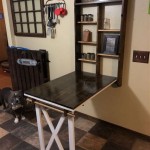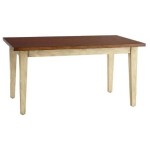Essential Aspects of DIY Garden Boxes for Vegetables
Creating a vibrant and productive vegetable garden requires thoughtful planning and the right materials. DIY garden boxes offer numerous advantages, including space optimization, improved soil quality, and enhanced drainage. Here are the essential aspects to consider when building your vegetable garden box:
Materials and Construction
Choose durable materials such as cedar, redwood, or pressure-treated lumber. Ensure the wood is at least 2-inches thick for optimal support. Cut the wood to the desired dimensions, assemble the frame using corner brackets or screws, and line the bottom with landscape fabric to prevent weed growth.
Size and Dimensions
Consider the space available and the number of plants you wish to grow. A common garden box size is 4' x 8', but you can adjust it based on your needs. The height should be around 12-18 inches to provide sufficient root space for most vegetables.
Soil Preparation
Fill the garden box with a nutrient-rich soil blend. Mix equal parts compost, peat moss, and topsoil. Ensure the soil is loose and well-draining by adding sand or perlite if necessary. Test the pH level to determine if it needs adjustment.
Drainage and Irrigation
Proper drainage is crucial to prevent root rot and other moisture-related issues. Drill drainage holes in the bottom of the box and cover them with landscape fabric. Consider installing an irrigation system, such as a soaker hose or drip irrigation, to provide consistent watering.
Crop Selection
Choose vegetables that are suitable for the climate and growing conditions in your area. Some popular choices include tomatoes, peppers, beans, cucumbers, and leafy greens. Plan the layout to maximize space and avoid overplanting.
Maintenance
Regular maintenance is essential for a thriving garden. Water deeply and consistently, especially during hot weather. Fertilize every few weeks with a balanced fertilizer. Control pests and diseases using organic methods or natural pesticides. Rotate crops annually to prevent soil depletion and disease buildup.
Benefits of DIY Garden Boxes
DIY garden boxes offer several benefits, including:
- Increased space utilization by creating vertical gardens.
- Improved soil quality and fertility.
- Enhanced drainage and reduced risk of waterlogging.
- Extended growing season by providing a warmer microclimate.
- Pest and disease control, as raised beds deter some pests.
By carefully considering these essential aspects, you can create a productive and enjoyable vegetable garden using DIY garden boxes. Enjoy the fruits of your labor and relish fresh, homegrown produce all season long.
:max_bytes(150000):strip_icc()/lazyguydiy-9fe727073fef43bca79764e5c6ea8f44.jpg?strip=all)
11 Free Diy Raised Planter Box Plans

How To Build Raised Bed Boxes Create Perfect Beds

How To Build Raised Bed Boxes Create Perfect Beds

How To Build A Raised Garden Bed

Our Diy Raised Garden Beds Chris Loves Julia

How To Build An Elevated Raised Garden Bed Diy Planter Box With Free Plans

How To Build A Raised Bed Even If You Have No Idea Where Start Sunset

How To Make A Simple Garden Planter Box Raised Bed
:max_bytes(150000):strip_icc()/September-Garden-4-27714c582b0d4ceaad95c9c24aaac9d9-25fe181085014f4381c4323f8ff30f3f.jpg?strip=all)
31 Easy And Inexpensive Diy Raised Garden Bed Ideas

Container Gardening Diy Planter Box From Pallets Foxy Folksy








